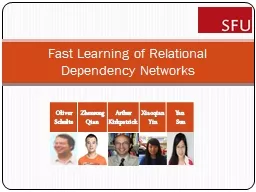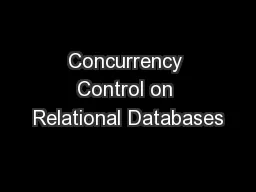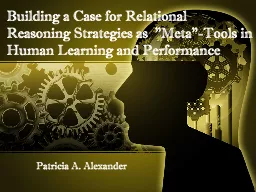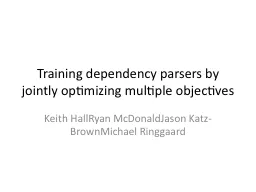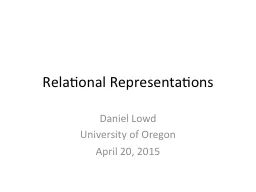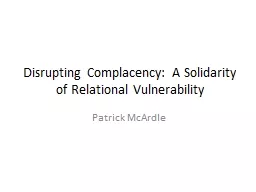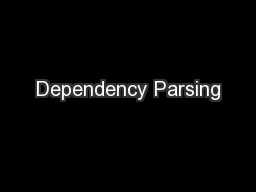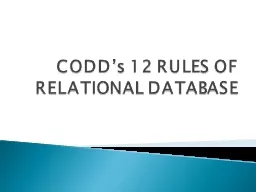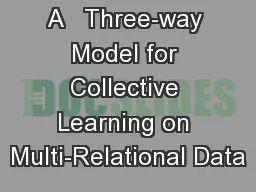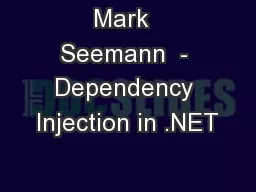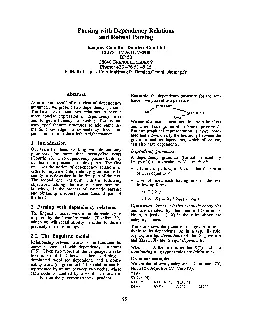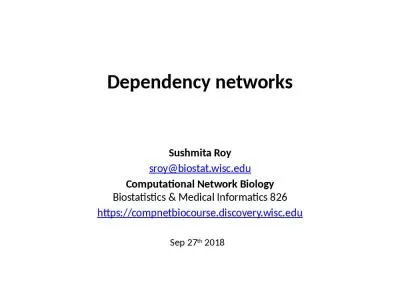PPT-Fast Learning of Relational Dependency Networks
Author : mediumgeneral | Published Date : 2020-08-27
Oliver Schulte Zhensong Qian Arthur Kirkpatrick Xiaoqian Yin Yan Sun Relational Dependency Networks Neville J amp Jensen D 2007 Relational Dependency Networks
Presentation Embed Code
Download Presentation
Download Presentation The PPT/PDF document "Fast Learning of Relational Dependency N..." is the property of its rightful owner. Permission is granted to download and print the materials on this website for personal, non-commercial use only, and to display it on your personal computer provided you do not modify the materials and that you retain all copyright notices contained in the materials. By downloading content from our website, you accept the terms of this agreement.
Fast Learning of Relational Dependency Networks: Transcript
Download Rules Of Document
"Fast Learning of Relational Dependency Networks"The content belongs to its owner. You may download and print it for personal use, without modification, and keep all copyright notices. By downloading, you agree to these terms.
Related Documents

